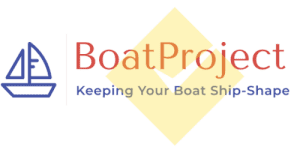Before leaving the dock with passengers, you need to brief them on how to be safe and what to do in an emergency

If something bad happens on the boat, do your passengers know what to do? What if you get hurt, or worse, go overboard?
Prevention is the best tactic for minimizing and reducing risks. Keeping people from getting hurt in the first place is much better than having to deal with injuries or other emergencies. And, you want people to have fun and enjoy the experience.
So, before I leave the dock, I get everyone together and go through my "safety speech". It is simple, yet important, and sets expectations of what's ahead. Here is how it goes:
"As we get underway, I want to make sure this is a fun, but safe trip, so I am going to go through a few things that you need to know. Hopefully, most of the items won't be needed, but we should be prepared in case of an emergency."
Then I go through the following. (After a few trips out, it gets to be second nature. In fact, I sometimes have my kids give it to ensure THEY are solid on it.)
1) I note how many fire extinguishers there are and WHERE they are located. Note: fire extinguishers' purpose is to buy you time to save yourself and others, not the boat. Important distinction.
2) I point out where the life preservers (PFDs) are located. I also ask everyone if they would feel more comfortable wearing one and that there is no shame in it. I wear one for safety and to cover my bases in case the crew decides NOT to pick me up in the event I go overboard.... :)
3) I address what happens in a Man Overboard situation: if someone goes over, everyone yells "Man Overboard" and points to the person in the water and does NOT stop pointing or taking their eyes off the person. The captain or the next designee will then give orders to specific people to get the boat stopped, to press the MOB button on the chart plotter, and to call in a "pan pan" to the Coast Guard. I stress that you can't joke about this because any nearby vessels who hear a shout of "man overboard" are obligated to help. At this point in the talk, I designate the next person or two in charge in the event I become incapacitated.
4) I explain how to get around the boat safely: three points of contact when moving about the boat. Two hands and a foot; a hand, foot and backside, etc. Also, show them where they should grab hold and where NOT to grab hold for support. If on a sailboat, always move on the high side (the side without the sail).
5) I explain how to safely go below: always go down the gangway (ladder) backwards i.e. facing the ladder and holding on. Going down forward during an unexpected wave can cause great injury to your back and neck.
6) On sailboats, I caution about always keeping low and out of the way of the boom. If they ever hear "Duck" to immediately duck vs. thinking about why someone is yelling "duck". That instant hesitation could be the difference of something not whacking you in the head vs. something severely injuring or killing you.
7) I point out where the first aid kit is located.
8) I talk about illness and feeling seasick: if you feel seasick, let me know so I can get you some relief or return to shore. Note that heat stroke can look a lot like sea sickness, so be on the lookout and make sure people are drinking liquids (non-alcoholic ones for hydration). Here is a link to heat exhaustion and signs of heat stroke.
Last, I ask (jokingly) "Did you sign up for the Booze Cruise or the Adventure Sail? The Booze Cruise means that you just want to relax and have a drink and enjoy the ride. The Adventure Sail means you want to handle the lines and be more involved." This way I can best assess how to make it an enjoyable trip for all.
At some point, we usually need to instruct passengers on how to properly use the head and where the cold drinks are.
If you use BoatProject™, there is a template with these listed called "Safety Briefing" that you can copy and customize to your needs. Once you have it down you can mark it complete or just delete it.
I hope you found this helpful. Let me know if I missed anything by commenting below.
Happy and Safe Boating! -- Rich
